On your trip to the Italian peninsula, you can certainly not miss an in-depth tour of the Aosta Valley.
Among the smallest regions in Italy, Valle d'Aosta has an almost completely mountainous territory, where some of the highest peaks of the peninsula rise. This makes it a perfect destination for those who love trekking, skiing and outdoor sports and activities in all seasons.
What also makes Valle d'Aosta unique is its multicultural and multilingual soul. The Valle d'Aosta is a border region, where Italian is spoken as well as French.
We have prepared a list of the most important places to see, to allow you to face this new adventure in the best way. Good continuation!
10. Castel Savoia: a fairytale place
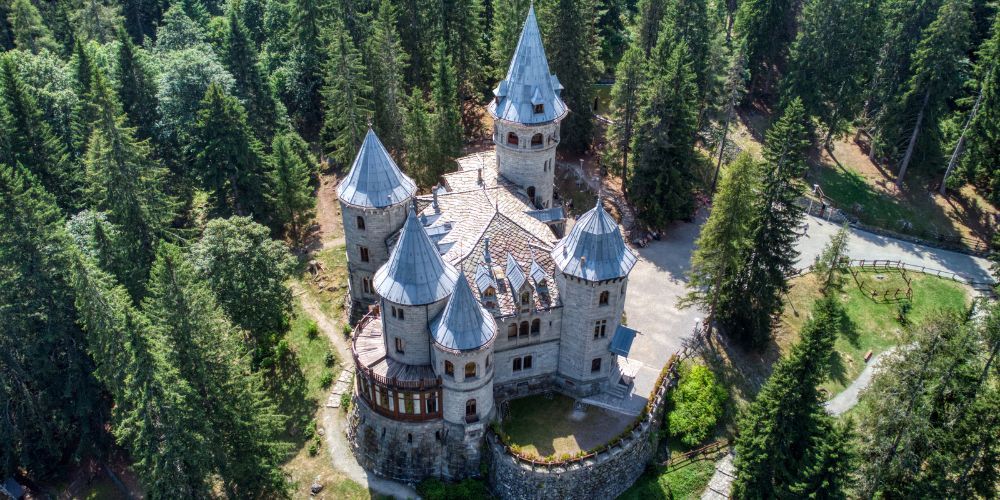
Your journey in the Aosta Valley begins with a fairytale place: Castel Savoia. It is the castle of Queen Margherita of Savoy, built at the end of the 19th century at the foot of Colle Ranzola, a few steps from Gressoney-Saint-Jean.
At an altitude of 1350 m, this castle, where Queen Margaret of Savoy used to spend the summer months, is surrounded by a coniferous forest and is a medieval-style building clad in local stone.
Of particular interest are the five spiked towers which give the structure its "fairytale appearance".
Inside, the ground floor and the main floor, from which there is a splendid view of Monte Rosa, are to be visited carefully.
Of great beauty is the Alpine garden adjacent to the castle. This is the starting point of the beautiful and simple Queen's Walk, the route Queen Margherita used to walk to reach the Tschemenoal hamlet.
The approximately 3 km long route also passes Gover Lake, an artificial lake, surrounded by fir and pine trees, where you can relax and admire wonderful nature.
9. Verres Castle: a simple and powerful structure
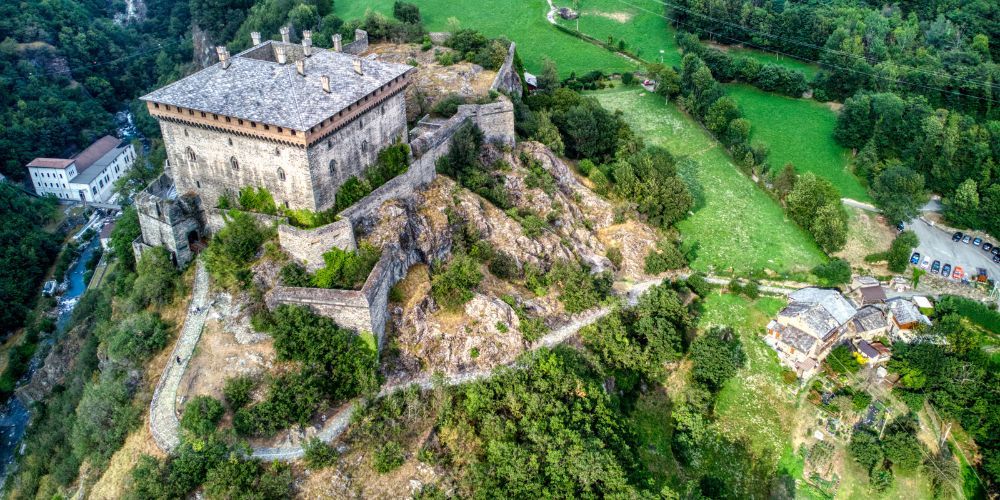
Continue your journey in search of the fascinating manors of the Aosta Valley: next step is, in fact, the Verres Castle, a military fortress built in the fourteenth century, at the behest of the Challant family.
The building has a characteristic "monovolume" structure in that it appears from the outside as a single, powerful block, with no decorations whatsoever. A structure as simple as it is powerful.
The castle is perched on a rocky spur overlooking the Évançon stream. It can be reached via a steep mule track, or from the village of Verres with a nature walk of about 20 minutes.
After visiting the manor house, take some time to visit Verres, a picturesque village of Roman origin. Verres is also the starting point of the Arboretum trail. This simple route offers a view of Verres Castle from far away, showing its strategic and panoramic position on the plain.
8. In Val Ferret: in close contact with nature
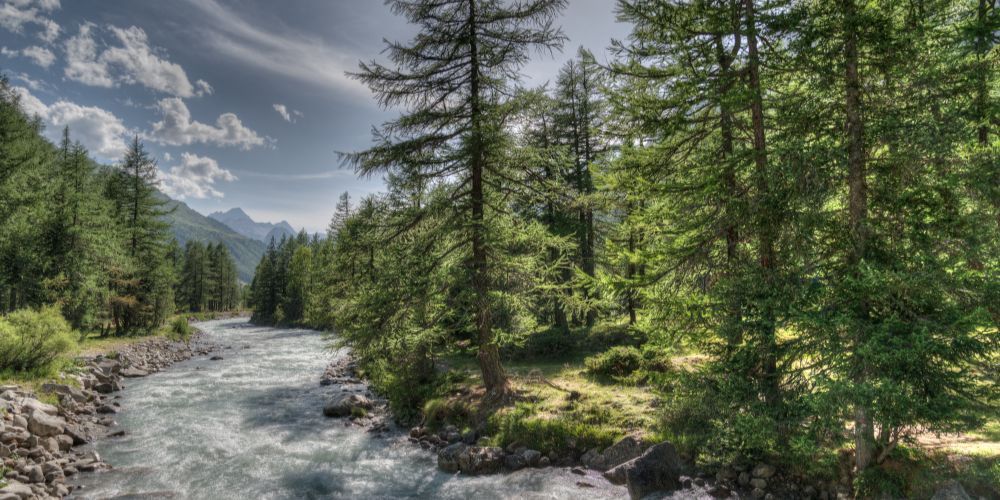
For nature lovers traveling in Valle d'Aosta, a sortie in Val Ferret, north of the Courmayeur basin, is mandatory.
You have two options: in winter, you can have fun with the many ski resorts available; in summer, however, the place turns into an outdoor farm, where numerous cows with "precious milk" graze.
This valley enjoys a unique panorama of the surrounding mountains, primarily the majestic Mont Blanc.
At the foot of Mont Blanc, don't miss the town of Courmayeur, surrounded by coniferous forests, mountains and glaciers.
This resort, although touristy and renowned, retains an authentic alpine atmosphere and a spectacular and varied natural landscape, which allows for relaxing and adrenalin-pumping sports activities in all seasons.
7. The Forte di Bard: a bastion of the Savoy

Another unmissable destination of your tour in Valle d'Aosta is the Forte di Bard, built on a fortress near the Dora Baltea. The place housed a stronghold, already at the time of Theodoric, in the 6th century AD, a building which was then completely rebuilt by the Savoy in the 19th century.
Today, after long restoration works, the structure houses the Museum of the Alps.
6. The Gran Paradiso National Park: the oldest park in Italy
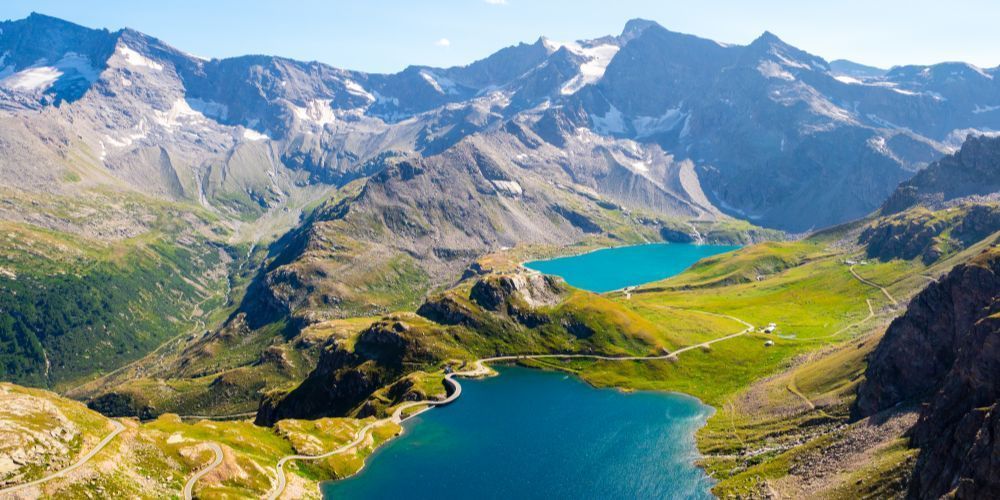
Among the many natural beauties of the region, the Gran Paradiso National Park certainly deserves a place of honor: established in 1922, the park is the oldest in Italy.
Its vast surface - more than seventy thousand hectares - is home to a large variety of plant and animal species. Above all, however, the ibex dominates, a symbol par excellence of the Gran Paradiso.
In the hamlet of Ceresole Reale there is also Chalet del Lago, the perfect place for an unforgettable stay in the Park, because it's close to the ski slopes and in an ideal position for nice trips by bike or on foot.
At an altitude of 1,544 metres, in the heart of the Gran Paradiso Park, don't miss the beautiful town of Cogne, which overlooks the vast Sant'Orso meadow, one of the largest mountain meadows in Europe.
Cogne, once a mining centre for iron extraction, is now considered a Pearl of the Alps. It is a well-known and popular tourist destination for its tranquillity, welcome and quality hospitality.
Cogne offers a large network of trails for walking in all seasons: snowshoeing itineraries, forest paths and snow trails.
With over 150 waterfalls, it is also famous for ice climbing. In summer, the waterfalls become a destination for pleasant walks for all those who want to immerse themselves in splendid landscapes and panoramas.
5. The Baths of Pré-Saint-Didier: a miraculous cure
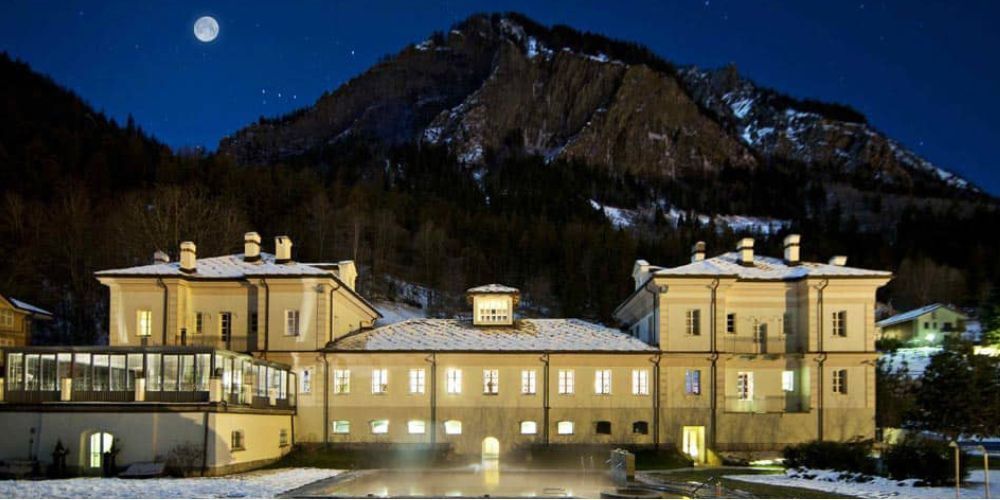
The thermal springs of Pré-Saint-Didier were already known to the ancient Romans; a first spa was built in the seventeenth century, but the structure we see today was built only from the nineteenth century.
The healthy and beneficial waters, which gush near the famous Orrido waterfall, will be an authentic cure-all for you and will give you the strength to continue your adventure.
The other best-known Valdostan thermal centre is the Saint-Vincent complex in Saint-Vincent.
Discovered in 1770, the thermal spring of Saint Vincent was called Fons Salutis for the beneficial properties of its water.
Today, the modern thermal complex of Saint-Vincent is surrounded by the splendid Alpine peaks of the Aosta Valley. It offers indoor and outdoor pools, saunas, emotional showers and relaxation areas with magnificent views of the valley. A wonder for body, eyes and soul!
Find out how to book Terme Pré-Saint-Didier Spa4. Aosta: Northern Rome

The capital and undisputed queen of the region is Aosta, the bulwark of the ancient civilization of Rome. In fact, the city is rich in archaeological remains that testify to its glorious past, such as the theater, the bridge, the amphitheater with its monumental facade, and above all the Arch of Augustus.
The largely preserved city walls and its prestigious archaeological area represent one of the most significant testimonies to the Roman era in northern Italy.
But there are also more recent monuments such as the Romanesque Complex of S.Orso and the Cathedral, built starting from the 11th century, a symbol of the city's religious devotion.
Aosta is a perfect starting point for discovering the wonderful territory of this region. Numerous walking itineraries lead from the city to green and scenic areas such as the Tsatelet Nature Reserve.
Hiking enthusiasts will find beautiful paths in Val d'Aosta, first and foremost part of the Via Francigena, which leads from Colle San Bernardo down to Aosta.
In addition, from the cable car behind the railway station, it takes 17 minutes to reach the famous resort of Pila at 1800m. Pila is a popular destination for skiing enthusiasts as there is a well-known ski resort here. In summer, there are many scenic walks in the middle of nature.
For a totally relaxing holiday, in a nature that's spectacular every day of the year, you may choose Relais du Berger, a lovely mountain view hotel.
3. On Mont Blanc: walking around perennial ice
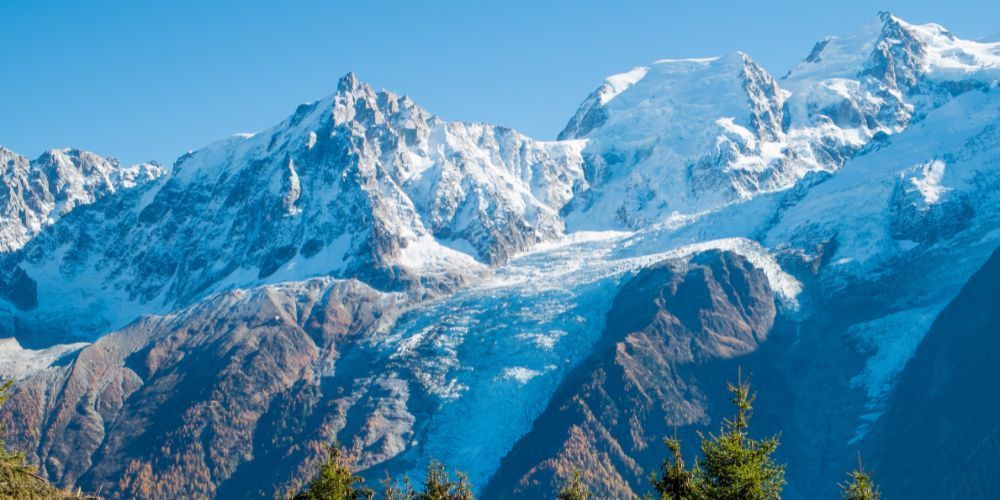
A trip to the Aosta Valley is unthinkable without a thorough visit of the majestic Mont Blanc.
You have two choices. The first is the so-called Mont Blanc Tour, which stretches for almost 170 kilometers and crosses over into France and Switzerland.
The second is a ride on the Skyway, the special rotating cable car that will allow you to admire the perennial ice of the colossal mountain.
Mont Blanc, at 4807 metres, is undoubtedly the main attraction of this tourist area and dominates Valdigne. Here are renowned resorts such as Courmayeur, La Thuile and the thermal baths of Pré-Saint-Didier.
2. The Mont Avic Natural Park: the embrace of Nature
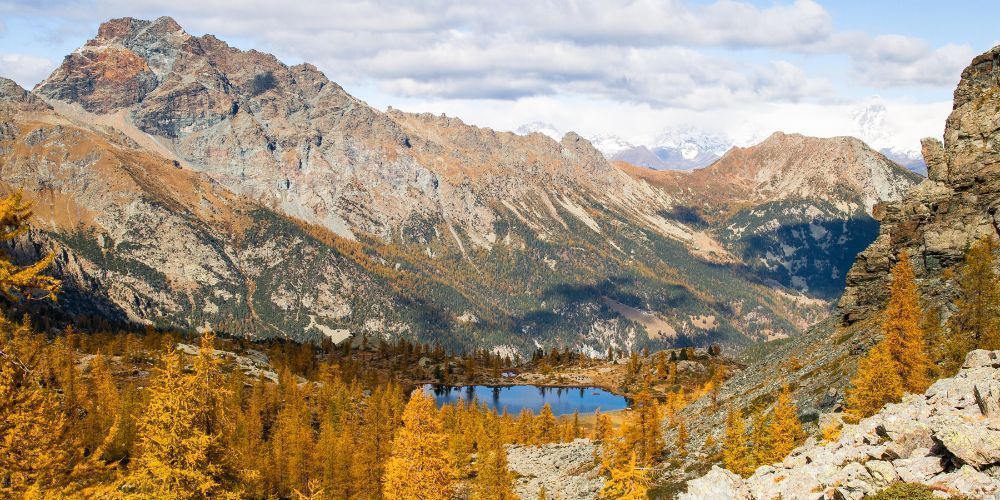
Another stop not to be missed for nature lovers is the Mont Avic Natural Park, which is located on the border with the Gran Paradiso Park and extends between the upper Champorcher Valley, the Chalamy Torrent Valley and part of the Dondena Valley.
This nature park offers more than 100 kilometres of trails that allow you to observe the special features of the area such as the region's largest forest of hooked pine, ancient villages, disused mines and vast meadows.
An excursion on Mont Avic will allow you to admire a large amount of unspoiled landscapes and immerse yourself in the unspoiled nature of the place, among rugged environments, expanses of beech and pine trees, in the company of chamois and ibex. We also recommend a trip to the lakes of Champdepraz and Champorcer.
There are around 30 lakes in the park, almost all of glacial origin. The presence of these lakes represents an important resource for the park's biodiversity.
Experienced hikers can reach all the Champdepraz lakes in a magnificent 2-day hike, spending a night at the Barbustel refuge (2154m).
An excellent starting point to visit this wonderful park is Le Village hotel, near to Champdepratz.
1. The Sanctuary of Notre-Dame de Guérison: the Light of Faith
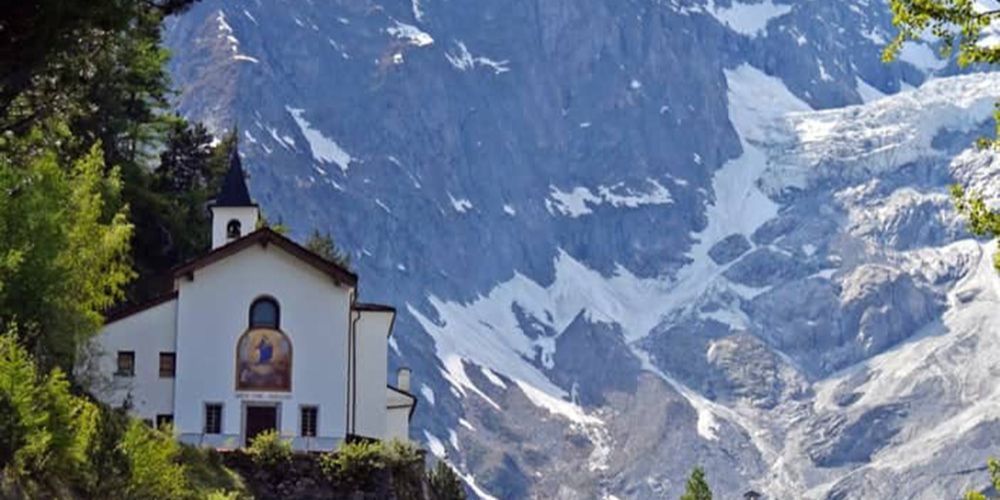
Your journey in the Aosta Valley ends with a mystical experience: a visit to the Sanctuary of Notre-Dame de Guérison, near Courmayeur, close to the Brenva Glacier, at the beginning of the beautiful Val Veny.
The Sanctuary was built in the nineteenth century to preserve a statue of the Madonna venerated since the seventeenth century, a relic preserved in a small chapel later destroyed by the advance of the glacier. The holy place was much loved by Pope John Paul II and is a pilgrimage destination for "miraculous climbers".
Extra tips for your trip: the valleys of the Aosta Valley

There are 13 valleys in Val d'Aosta, each with a different history, villages, traditions and many beautiful views. All of them are worth a visit. Below we mention 3 of the most attractive.
Among the most beautiful valleys in Val d'Aosta is Valdigne, at the foot of Mont Blanc. In winter, this valley becomes a favourite destination for lovers of skiing and winter sports, while in summer, visitors can explore forests, vast meadows and numerous lakes such as Lake Arpy and Lake Verney, the largest lake in Val d'Aosta, through a huge network of trails. The panorama is completed by the splendid waterfalls of the Rutor glacier, lodges and mountain huts.
In addition, on the col du petit Saint Bernard, on the border between Valdigne and France, there is an interesting archaeological area that includes a 'cromlech', a stone circle dating back to the Iron Age, the remains of ancient fortifications, two rest stations dating back to Roman times, and some bunkers and anti-tank blocks from World War II.
Another beautiful valley at the foot of Mont Blanc is the Val Veny, a valley that at first sight appears rugged and wild and then turns into a wide, flat basin. This valley offers many itineraries for all tastes: from walks to the lakes or lodges to more challenging high-altitude trails.
Finally, we recommend Val d'Ayas, the widest and sunniest valley in the region, with splendid views of the Monte Rosa chain.
Here too, in summer and winter, you can enjoy many outdoor sports, skiing, trekking, and mountain biking, but also yoga and relaxing walks.
The iconic Fenis Castle
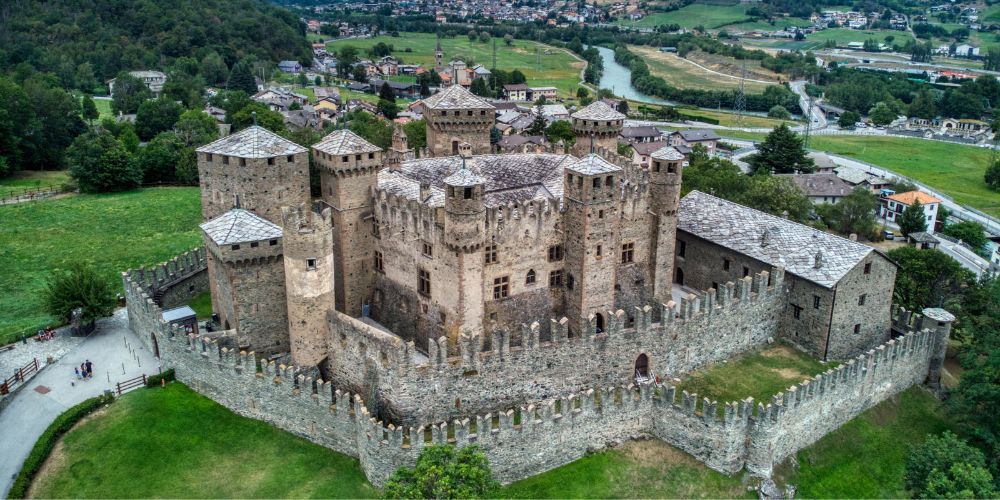
Another must-see attraction is the Castle of Fenis, located in Fenis, about a 30-minute drive from Aosta.
This castle, with its towers and double crenellated walls, is the best-preserved medieval castle in Italy. Visiting the castle of Fenis will be like stepping into a fairy tale. Unlike the other Valdostan castles, Fenis is not on an upland in a defensive position but stands on a low hill surrounded by a green meadow. This is because more than a defensive fortress, Fenis Castle was the lordly residence of the Challant family.
Inside, on the ground floor, you can visit the armoury, refectory and kitchens. On the first floor are the rooms, the lords' reception rooms and a chapel with fine frescoes. The courtyard and wooden balconies are also decorated with beautiful frescoes.
After visiting the castle, you can explore the pretty village of Fenis with its old lordly residences and the beautiful church of St Maurice.
If you prefer to relax in nature, you will find the Tzanté de Bouva green area and several hiking and biking trails within walking distance of the castle.
If you visit Fenis in October, you can also participate in the traditional chestnut festival; with music and tasty roast chestnuts. The most eagerly awaited event of the festival is the 'castagnata', which consists of preparing about 15 quintals of roasted chestnuts!
Fairs and traditional festivals
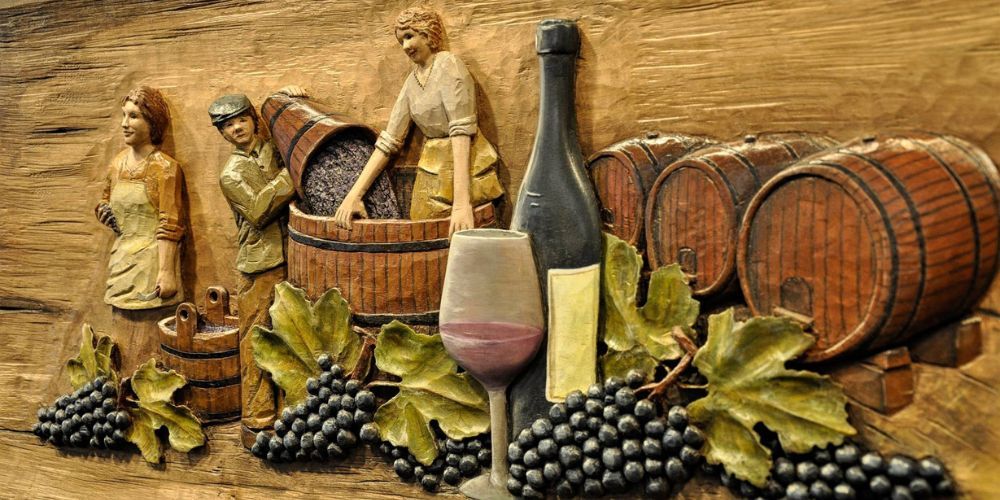
Countless festivals and popular fairs occur in the Aosta Valley throughout the year. On these occasions, you can learn about the region's customs and traditions, as well as taste its typical products.
If you want to immerse yourself in the tradition and atmosphere of the Aosta Valley, we recommend participating in the Sant'Orso fair, an annual event that animates the streets of the historical centre of Aosta on 30 and 31 January.
On this special occasion, Aosta Valley artists and artisans exhibit their products and handcrafted creations. You will find wood sculptures, worked stones, wrought iron objects, worked fabrics, lace, household items, and typical products such as cheese and cold cuts.
The Sant'Orso fair is an experience to get to know Valle d'Aosta's culture and traditions. The event is also enlivened by lots of music and folklore, accompanied by tastings of wines and typical products.
The town centre of Aosta fills up with people on the night between 30 and 31 January, and the streets remain illuminated until dawn!
Let's go to Cogne, where you will have the opportunity to participate in various cultural and traditional events. Among the most popular festivals, we mention the following:
- Cantine Gourmet for wine tasting and typical Cogne dishes.
- Gran Paradiso Film Festival, dedicated to nature films
- Deveteya, the descent of the herds from the alpine pastures to the valley
- The traditional end-of-year torchlight procession with the tasting of 'Mécoulin', a typical Cogne cake.
Finally, in May, the Castle of Verres hosts the Historic Carnival, a re-enactment of the glorious events of Countess Caterina di Challant. A mix of historical events, legends, parades in medieval costumes, dancing and much more.
Typical dishes and products from Valle d'Aosta cuisine

Those who love good food should try one of the many restaurants in Aosta Valley and taste the typical dishes and products of the region.
The cuisine of the Aosta Valley is similar to the cuisine of neighbouring transalpine regions (French Savoy and the Valais Canton in Switzerland).
It is a simple cuisine, with recipes mostly based on meat and cheese. Definitely try 'fontina', a delicious local cheese also used in several typical dishes such as fondue and risotto with fontina.
Don't forget polenta, always present on Valle d'Aosta tables, and 'Jambon de Bosses', a raw ham flavoured with mountain herbs, produced in Saint-Rhémy-en-Bosses, a town at 1600 metres in the Gran San Bernardo Valley on the Swiss border.
Why visit Aosta Valley
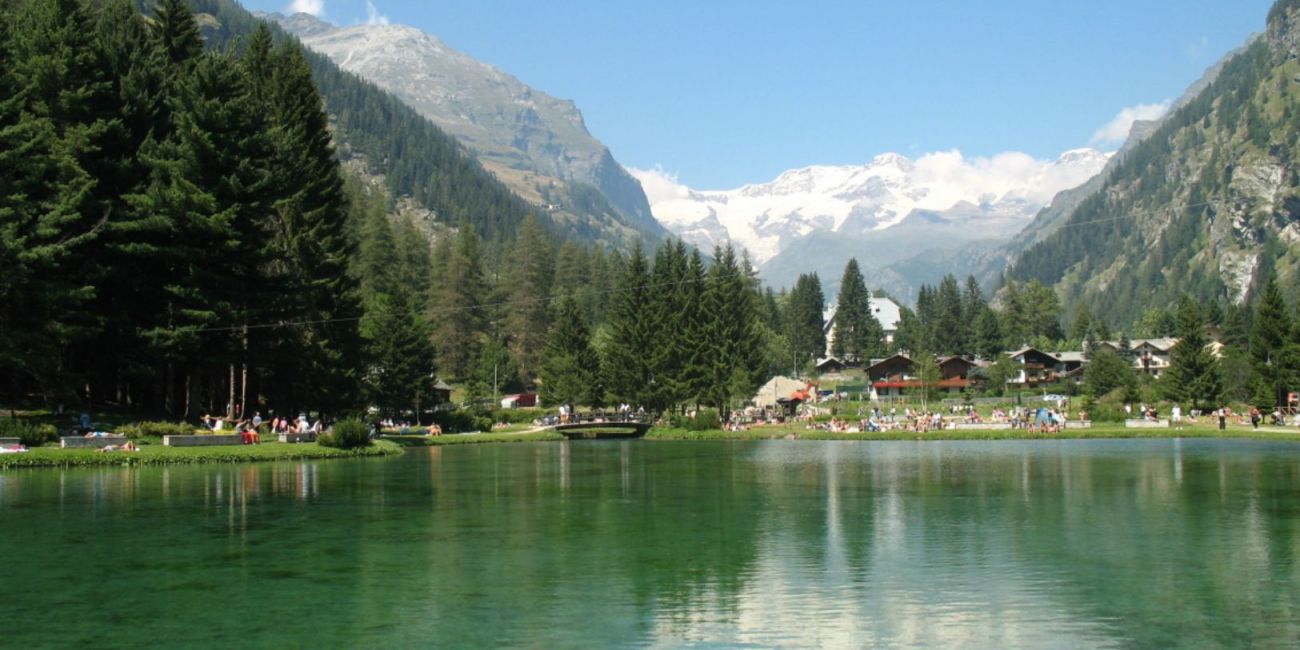
The Aosta Valley is the ideal destination for those who want to be in contact with nature without renouncing history and traditions. Its fairy-tale castles, green valleys and splendid mountains make it an enchanting region to visit every season. Those who love winter sports, hiking and outdoor activities will love this region.
Planning your trip to Val d'Aosta? Visititaly.eu recommends the 10 best places to sleep in Aosta Valley!
If you have a few more days available, you can stop in the neighbouring region of Piedmont and visit Turin, the first capital of Italy!
Visit Turin with the Piemonte cardAbout the author
Written on 20/02/2020


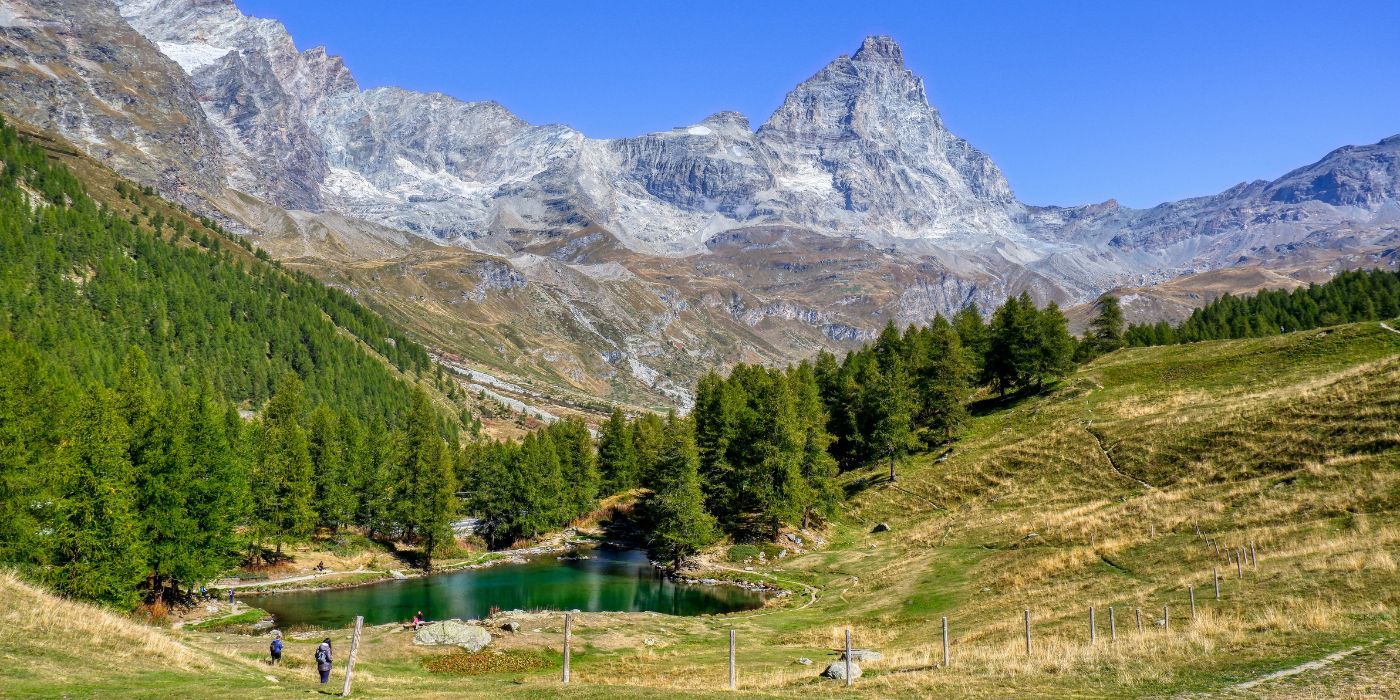
Francesco Paolo Colucci
Discovering Val d'Aosta, a region of natural beauty and fairytale atmospheres. Here are 10 things not to be missed.